Which kind of orange cat appearance is the best: comprehensive analysis and purchasing guide
Orange cats, with their warm and bright fur color and likable personality, have become favorites among many cat lovers. But what kind of orange cat appearance can be considered superior? This article will provide you with a detailed analysis of orange cat appearance standards, fur color classification, personality traits, and purchasing considerations to help you find the most ideal orange cat companion.
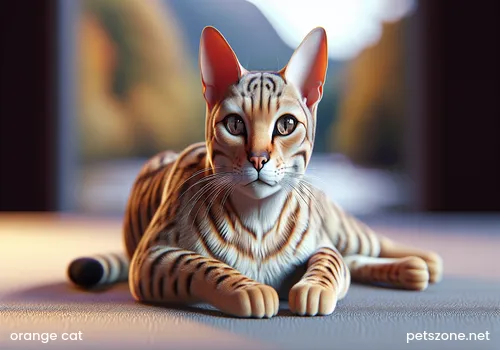
Article Summary
The appearance of orange cats mainly considers fur color uniformity, pattern distribution, and body structure. The two most ideal types are solid orange and orange-white interspersed. A good-looking orange cat has bright and full fur color, symmetrical patterns, a proportionate body, a rounded head, and large, bright eyes.
Orange cats are not a specific breed but refer to cats with orange fur color, including Chinese native cats and several breeds. When selecting an orange cat, attention should be paid to health status and personality traits, avoiding focusing only on appearance while neglecting inner qualities.
Orange cats are famous for the saying "Nine out of ten orange cats are chubby," with males accounting for up to 80%. They have gentle and affectionate personalities, making them ideal family pets. Understanding these traits helps you better care for your orange cat and build a long-lasting harmonious relationship.
Basic Concepts and Characteristics of Orange Cats
Orange cats are not a specific breed but a general term for all cats with orange (also called ginger) fur color. This unique color can appear in many breeds, ranging from the common Chinese native cat to the noble Persian cat, all possibly wearing this warm "coat." The shade of orange varies from elegant beige to intense orange-red, forming a rich and colorful "palette" for orange cats.
Interestingly, the proportion of male orange cats is unusually high, about 80%. The scientific reason behind this is that the gene controlling orange color is located on the X chromosome. Male cats (XY) only need to inherit one orange gene from their mother to appear orange, whereas female cats (XX) need to inherit the orange gene from both parents to become orange cats. This genetic trait also explains why "calico cats" (black, orange, and white) are almost always female.
One of the most well-known traits of orange cats is the popular saying, "Nine out of ten orange cats are fat, and one can press down the stove." Indeed, many orange cats have remarkable appetites and a tendency to gain weight easily, related to the fact that most are males (usually larger in size) and generally gentle and inactive in personality. However, it is noteworthy that excessive obesity seriously affects cats' health. As responsible caretakers, we need to reasonably control the orange cat's diet and encourage exercise.
Detailed Standards of Orange Cat Appearance
Fur Color and Patterns
The appearance of orange cats is primarily reflected in their fur color. High-quality orange cats should have bright and full fur, presenting a vivid orange tone. Professionally, orange cat fur is usually divided into two main categories: solid orange and orange-white interspersed. Solid orange cats are mainly orange all over, allowing for light white stripes, but the overall tone should be even and uniform without mixed colors or spots. Among these cats, a few may have white on the abdomen; as long as the white area is not too large and is evenly distributed, they still belong to the excellent appearance category.
Orange-white interspersed cats display another kind of beauty, with large orange patches alternating with clean white underfur. Ideal patterns should have clear boundaries, symmetrical designs, moderately sized patches, and harmonious distribution. Whether solid orange or orange-white, fur should be glossy and show a healthy shine under light, avoiding dry and dull hair.
It is worth mentioning that orange cats also have various pattern types. According to the Cat Fanciers' Association (CFA) classification, tabby patterns mainly include classic tabby (Classic Tabby, with swirl-like patterns on the back), mackerel tabby (Mackerel Tabby, parallel stripes on the sides), and spotted tabby (Spotted Tabby, with spots spread across the body). Each pattern type has its unique features; there is no absolute superiority, and selection depends mainly on personal aesthetic preference.
Head Features
A high-quality orange cat's head should be round and full, conforming to the "round face plate" aesthetic standard. From the front, the head appears round or oval, with moderate spacing between ears. Ear size should be proportionate to the head, and ear tips are best slightly rounded. The eyes are the highlight of the orange cat's face: they should be large and round, bright and spirited, with common colors being green, gold, or copper. Some rare appearances may feature blue eyes or "odd eyes" (heterochromia).
The nose should be straight and prominent, often brick red or pink, harmonizing with the fur color. Many orange cats have a clear "M" shaped marking on their forehead, affectionately called the "angel's kiss" by cat enthusiasts, making it one of the orange cat’s distinctive marks. The area around the mouth should have a complete lip line, with a firm chin that forms a good bite alignment with the upper jaw.
Body Structure and Proportion
An outstanding orange cat should have a well-proportioned body structure. The size is medium to large, with sturdy but not bulky bones and well-developed muscles with smooth lines. From the side, the body presents a rectangular proportion, with a straight back and broad chest; the waist should not be too slender. Limbs are of moderate length and proportionate to the body, with paws rounded and solid.
The tail is an important part of an orange cat's body. The ideal tail should be of moderate length, thick at the base, gradually tapering to the tip, with dense fur. Many orange cats have ring patterns on their tails and slightly darker tail tips, enhancing their unique charm. Overall, the cat's body should show a balance of strength and elegance — neither too heavy nor too thin.
Breed Differences and Special Appearances of Orange Cats
Chinese Native Orange Cat
The orange cat among Chinese native cats is the most common type, usually short-haired, sturdy, and adaptable. An excellent Chinese native orange cat should have uniform fur color, clear patterns, and proportionate body. Although they lack formal breed certification, many native orange cats have appearances comparable to purebred cats, particularly excelling in fur color brightness and pattern symmetry.
Within native orange cats, a special subtype called "yellow tabby" exists, characterized by more distinct tabby striping. Their fur usually combines deep orange with black stripes, resembling a small tiger. In appearance evaluation, particular attention is paid to the clarity and continuity of the stripes. Quality yellow tabbies have sharp contrasts and uninterrupted patterns.
Appearance Characteristics of Breed Orange Cats
Besides native cats, many formal cat breeds also have orange individuals whose appearance standards follow general orange color principles while conforming to the breed's features:
Persian Orange Cat: As a representative of long-haired breeds, fur quality heavily influences the appearance evaluation. A premium Persian orange cat should have dense and soft fur, uniform color, and facial features matching the Persian "doll face" standard—round face, small ears, and big round eyes. Since long fur can mask body structure flaws, special attention should be paid to structural symmetry when selecting.
British Shorthair Orange Cat: This breed’s orange cats are known for their rounded body and thick coat. A top-quality specimen should have an especially round head, large and round eyes, and a compact muscular body. The coat is short and dense, feeling as soft as velvet, with full and even fur color.
Exotic Shorthair Orange Cat: The prototype of the "Garfield cat," combining Persian facial traits with the convenience of short fur. High-quality individuals have flat faces, large round eyes, sturdy bodies, and bright fur. This breed’s orange cats often better meet the public’s idea of a "chubby orange cat" adorable image.
Maine Coon Orange Cat: As a large breed, Maine Coon orange cats are evaluated especially on size and bone structure. Premium individuals are huge, with dense fur—particularly with well-developed mane around the neck and feathered tail. Since Maine Coons often have tabby stripes, clarity of stripes on orange Maine Coons is especially important.
Rare Appearances and Special Features
In the world of orange cats, some rare appearances are highly sought after:
Odd-Eyed Orange Cat: Refers to orange cats with two different colored eyes, usually one blue and one yellow. This unique appearance arises from abnormal pigment distribution in the iris and is rare among cats. Odd eyes do not affect health but add a mysterious charm.
Long-Haired Orange Cat: Most orange cats have short hair; long-haired orange cats are relatively rare. Quality long-haired orange cats have smooth, glossy, and evenly colored fur, especially with attention to avoiding matting or dryness.
Pure White and Orange Cat: An extremely rare appearance characterized by predominantly pure white fur decorated with orange patches, with a high proportion of white. These cats are usually very aesthetically pleasing but require noting that pure white cats may have a genetic tendency toward deafness.
Personality and Behavioral Characteristics of Orange Cats
Orange cats are not only known for their excellent appearance but have also won countless owners' hearts with their unique personality charm. Generally, orange cats are gentle, affectionate, and enjoy interacting with humans, making them typical "companion" pets. They are smart and quick to understand owners' commands and household rules, with strong adaptability—even orange cats adopted as adults can quickly adjust to new environments.
Orange kittens tend to be lively, curious, and love exploring every corner of the home. With age, they become more calm but the attachment and affection towards their owners grow stronger. Many retain a "talkative" trait, using various vocalizations to communicate needs or simply greet their owners.
The saying "nine out of ten orange cats are chubby" is not unfounded—orange cats generally tend to gain weight easily. This is partly because most of them are male (males typically larger than females), and partly due to their gluttonous and sedentary nature. Owners need to pay special attention to controlling their diet, providing balanced nutrition, and encouraging exercise to avoid health problems caused by obesity.
Interestingly, an orange cat’s personality may somewhat correlate with its fur color type. Observations show that solid orange cats tend to be more confident and outgoing, while orange-white cats may be relatively gentler and more cautious. Of course, these differences are not absolute; every orange cat has its unique personality charm.
How to Select Orange Cats with Excellent Appearance
Choosing Purchasing Channels
When looking for orange cats with good appearance, the first step is to choose a reliable source. Reputable catteries are the preferred option, where cats usually come with health guarantees and pedigree records. Though prices are higher (ordinary orange cats typically range from 500 to 2000 RMB, and breed orange cats might be more expensive), both appearance and health are ensured. Pet stores are also common choices but require attention to the shop’s reputation and the origin of the cats.
Adoption instead of purchase is a worthy approach. Many animal shelters and charitable organizations have orange cats waiting to be adopted. Although these cats may lack formal appearance certification, outstanding individuals are not rare. Adoption fees are usually lower (about 200-500 RMB, including basic medical care). Whatever way you choose, avoid cats from unknown sources to prevent supporting illegal breeding or encountering health risks.
Key Points for On-Site Selection
When selecting an orange cat on site, it is recommended to follow the principle of "look first, then touch, and finally observe":
Look: First, observe the cat’s overall appearance. Is the fur color uniform and bright? Are the patterns symmetrical and beautiful? Are the body proportions coordinated? Healthy orange cats have bright, spirited eyes with no abnormal secretions; noses are moist without mucus; ears are clean and odorless; and the anal area is clean without dirt.
Touch: Gently stroke the cat to feel the fur texture. The fur of a top-quality orange cat should be soft, smooth, naturally glossy, without bald patches or dandruff. Gently examine the cat’s body to feel skeletal and muscular development; premium cats should be sturdy but not overweight.
Observe: Notice the cat’s behavior and reactions. A cat with good appearance and temperament should be curious but not fearful of people, accepting gentle interaction. Overly timid or unusually aggressive individuals may require more socialization training. Observe the cat’s walking posture; gait should be steady and coordinated without signs of limping.
Health Check and Pedigree Examination
No matter how excellent the appearance is, health is always the priority. When purchasing, request to see the cat’s health records, including vaccination and deworming status. If possible, arrange for a basic physical exam or observe the cat’s appetite, mental state, and excretion.
For breed orange cats, pedigree certificates are important guarantees of appearance. Certificates detail the cat’s family information and appearance evaluations, serving as important references to judge quality. Although Chinese native orange cats lack pedigree certificates, observing their parents (if possible) can help predict a kitten’s future appearance development.
Age Selection and Seasonal Factors
Age is also important when choosing an orange cat. The ideal age for kittens to leave their mother is 8-12 weeks, at which point they have developed independent living ability and are in a critical period of socialization, making it easier to adapt to a new environment. Cats that separate too early from their mother may have health or behavioral issues, while older cats may require more time to adjust to a new home.
Season also affects the orange cat’s appearance. Kittens born in winter often have denser fur and deeper color; those born in summer tend to have shorter fur and brighter color. Based on personal preference, one can choose cats born in different seasons.
Daily Care and Maintaining Appearance of Orange Cats
Fur Care Tips
The primary task to maintain an orange cat’s appearance is fur care. Short-haired orange cats need brushing 2-3 times a week, using rubber or fine-toothed combs effectively to remove dead hair; long-haired cats require daily combing to prevent matting. Brushing should be done gently, especially on sensitive areas like the belly and tail.
Bathing frequency should not be too high, generally once every 2-3 months. Use cat-specific shampoo, keeping water temperature between 38-39℃. Thoroughly dry the fur after washing to prevent skin diseases caused by dampness. Regularly check the cat’s skin condition and seek timely veterinary care if abnormalities are found.
Diet Management and Weight Control
The nickname "orange pig" reminds us to pay particular attention to orange cats’ diet management. Choose high-quality cat food, with protein content not less than 30%, and avoid excessive carbohydrates. Supplement with omega-3 rich foods such as deep-sea fish, which help maintain fur luster.
Control feeding amounts: adult orange cats generally require about 50-70 grams of dry food per day (adjusted by body size and activity), fed 2-3 times daily. Avoid casually feeding human foods, especially those high in salt and sugar. Regularly weigh the cat to maintain a proportionate physique (ideal adult orange cat weight is generally 4-6 kg, depending on bone size).
Health Maintenance and Exercise Encouragement
Regular vaccination and deworming are basic to keeping orange cats healthy and maintaining their appearance. Annual health checks are recommended, twice a year for cats over 7 years old. Pay special attention to oral health by regularly checking teeth and scheduling professional cleaning when necessary.
Encouraging exercise helps prevent obesity and maintain an elegant physique. Arrange 15-20 minutes of interactive play daily, using toys like teaser wands and laser pointers to stimulate hunting instincts. Provide cat trees to meet climbing needs, which exercise the body and sharpen claws, achieving two aims at once.
Environmental Optimization and Psychological Care
A comfortable living environment helps orange cats maintain optimal condition. Provide quiet, concealed resting areas; cat beds should be placed in warm, dry locations. Maintain indoor temperature between 20-26℃; ensure warmth in winter and prevent overheating in summer.
Orange cats are emotionally rich animals needing their owner’s companionship and love. Spend time daily interacting, petting, and talking to deepen bonds. In multi-cat households, ensure sufficient resources (feeders, water bowls, litter boxes, etc.) to reduce competition stress. A stable living environment and owner’s love are the psychological foundation for an orange cat to maintain good appearance.
Common Questions and Answers
Q: Are all orange cats male?
A: No, but about 80% of orange cats are males. Female orange cats are relatively rare and require inheriting the orange gene from both parents to express orange color.
Q: What is the average lifespan of orange cats?
A: The average lifespan of orange cats is 10-16 years, depending on breed and living conditions. Indoor, well-nourished orange cats generally live longer.
Q: Which has better appearance, solid orange cats or orange-white cats?
A: There is no absolute better or worse; it mainly depends on personal preference. Solid orange cats have uniform color, while orange-white cats show stronger contrast, both with excellent individuals.
Q: What does the "M" pattern on an orange cat’s forehead mean?
A: It is a genetic trait of orange cats. Its exact cause is unknown. Folklore associates it with religious symbols, while scientifically, it is the expression of the tabby gene.
Q: How to judge the age of an orange cat?
A: Age can be assessed by teeth condition (kitten milk teeth are white and small, adult teeth may show wear), eye clarity (younger cats have brighter eyes), and fur condition (older cats’ fur may become coarser).
Final Words
Orange cats, with their warm fur and charming personality, have become a source of joy for countless families. Through the detailed introduction in this article, we believe you now have a comprehensive understanding of "Which kind of orange cat appearance is the best." Remember, appearance standards are only references; every orange cat has its unique charm. When choosing, pay attention not only to external appearance but also to health and personality traits. Whether you ultimately select a show-quality breed orange cat or an ordinary but adorable native orange cat, providing sufficient love and scientific care will gain you a precious companionship. May every cat lover find their own "perfect" orange cat and write a warm life story together.
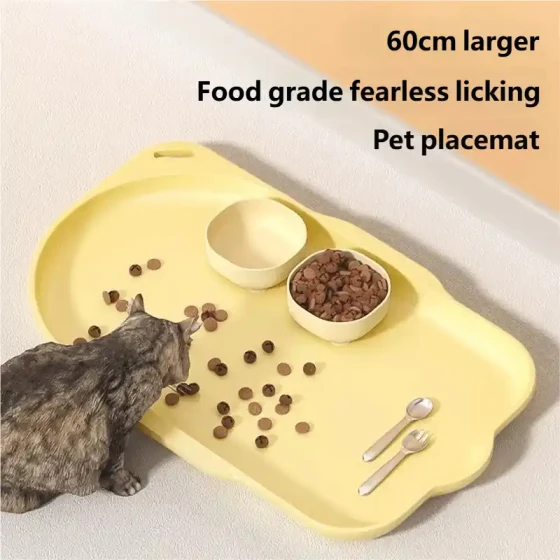
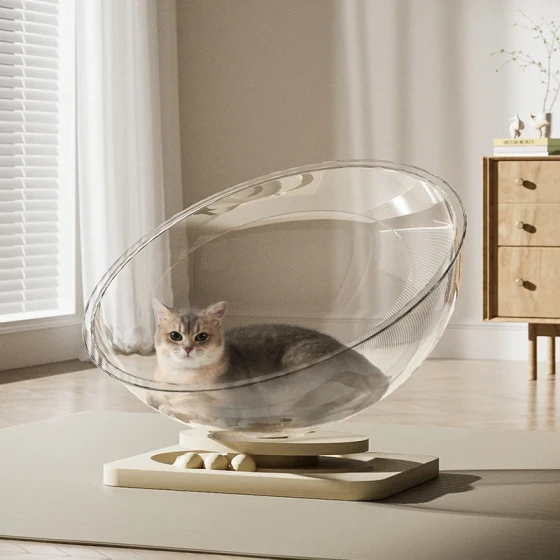
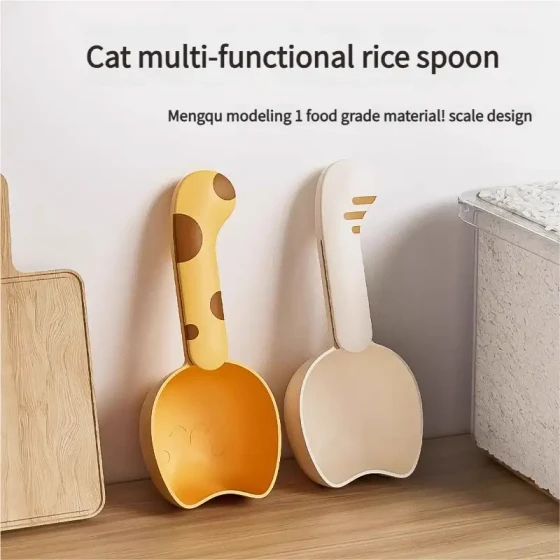

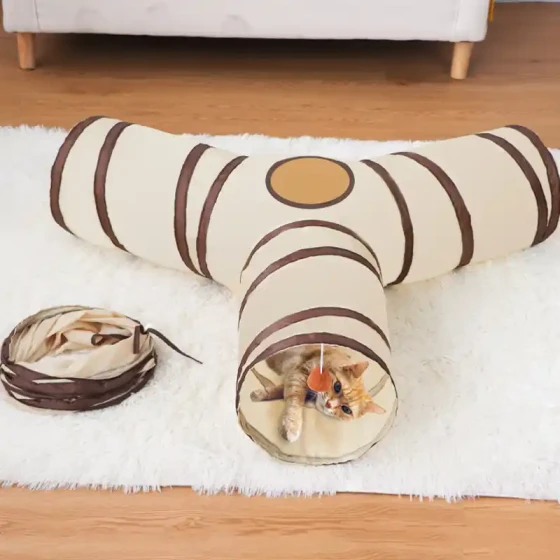
-560x560.webp)